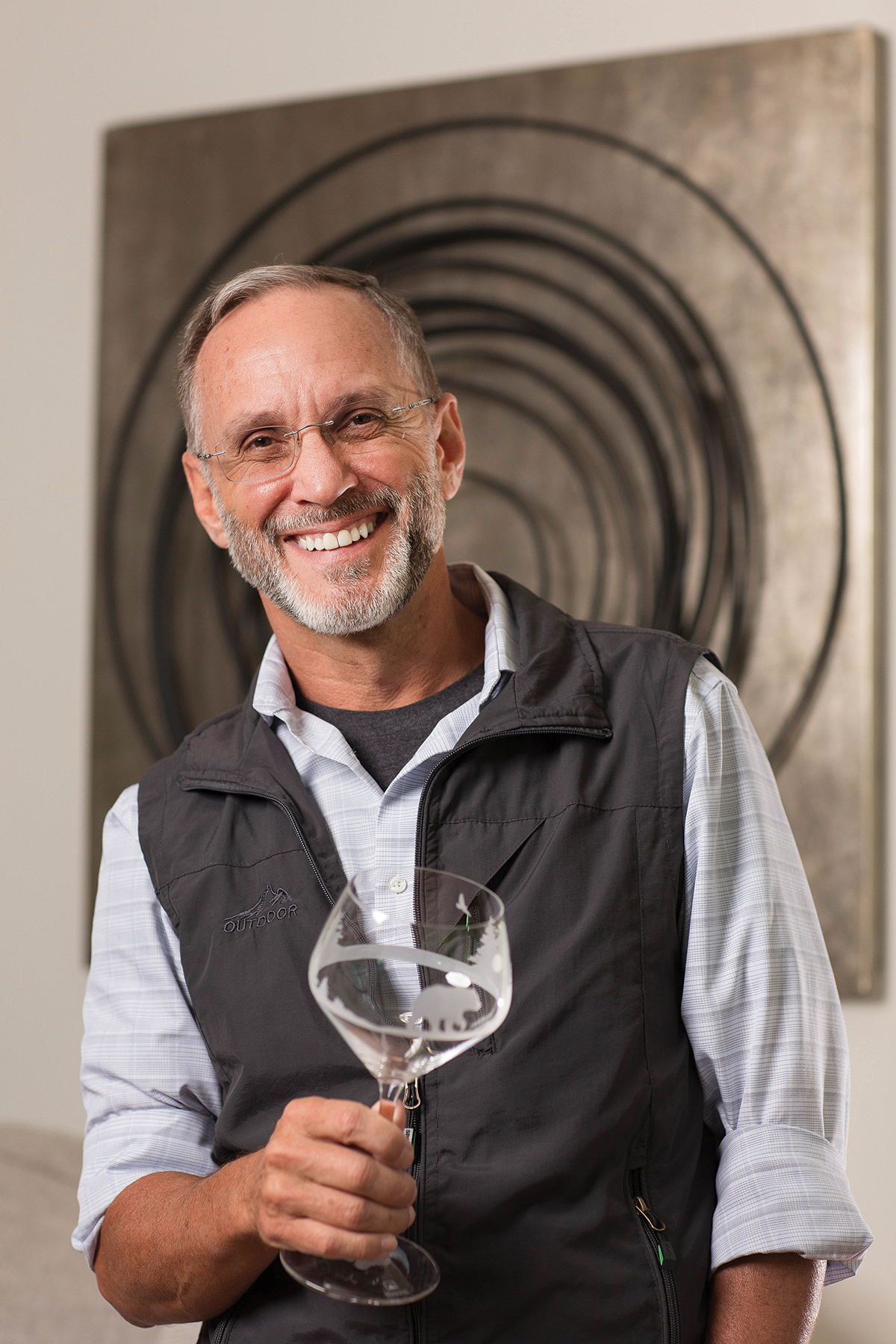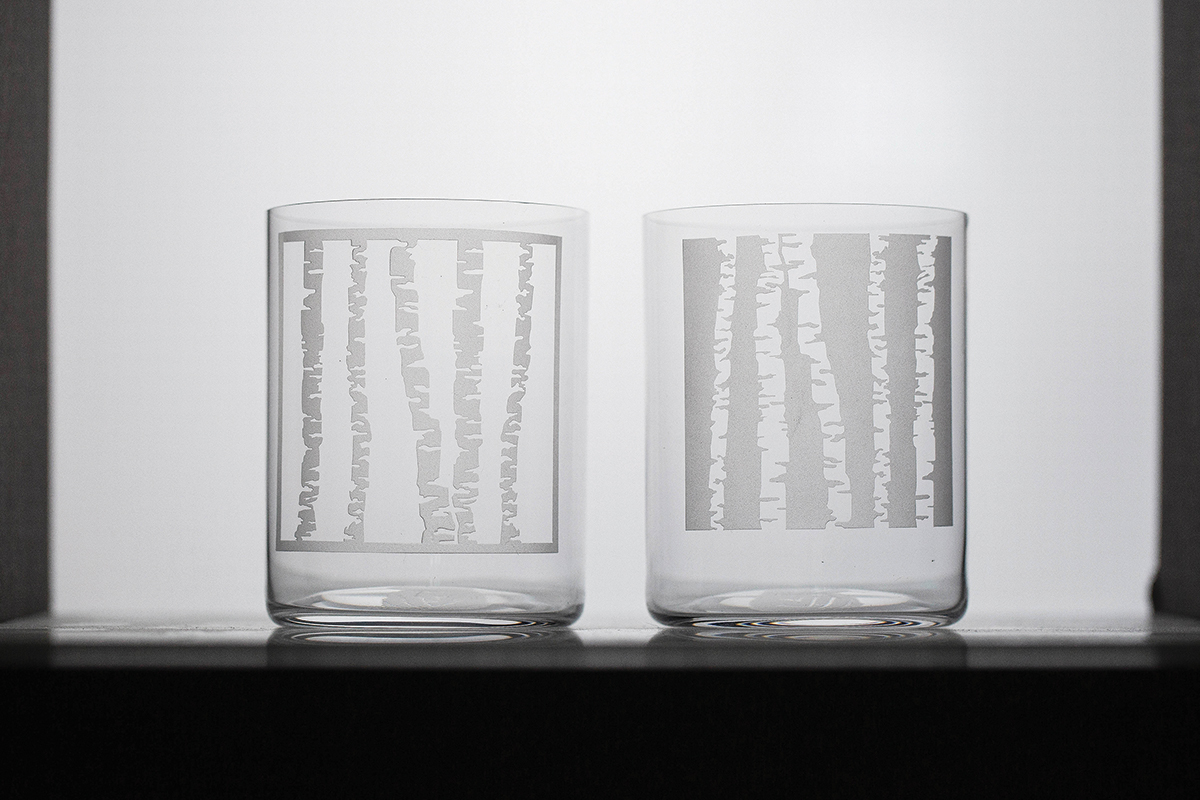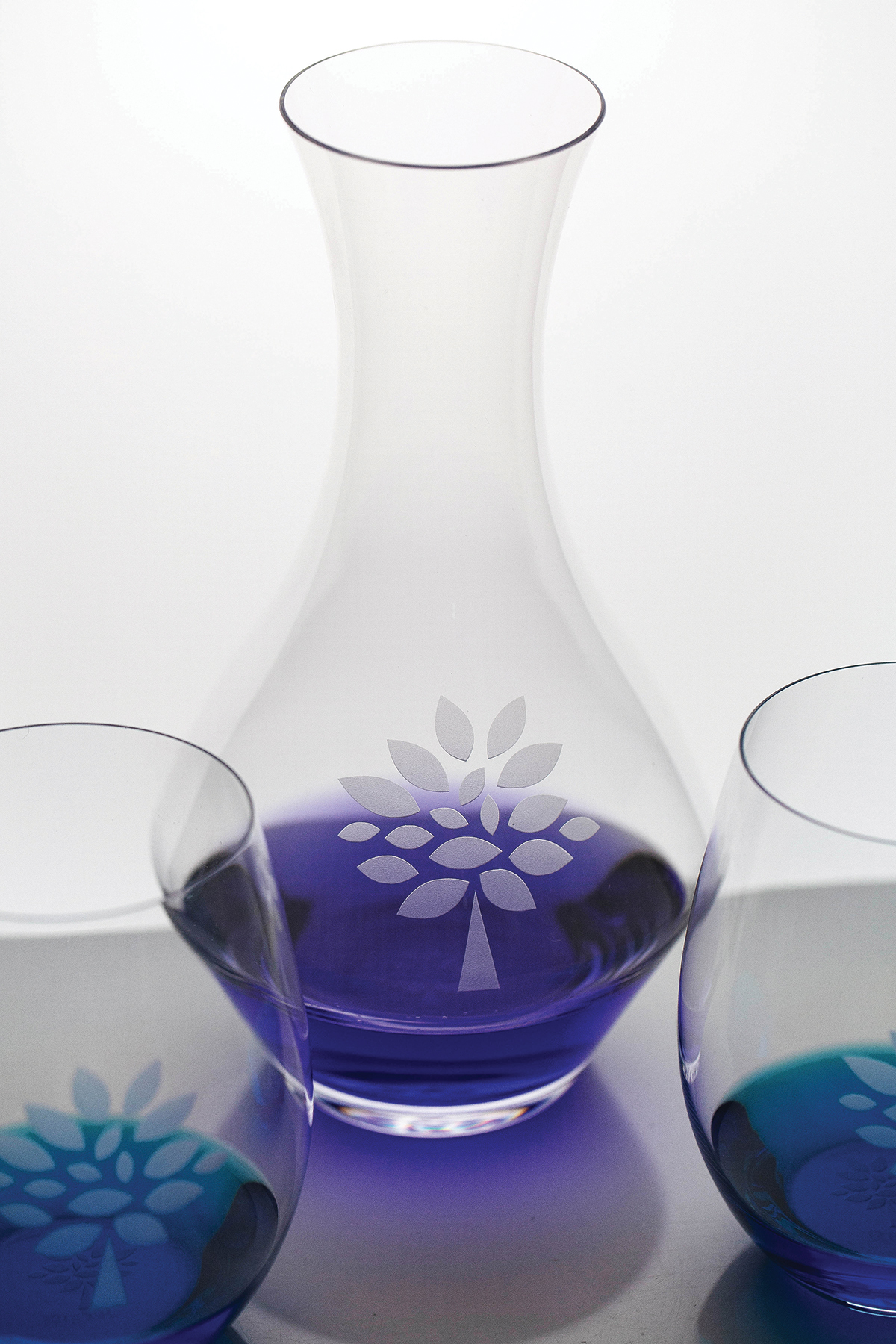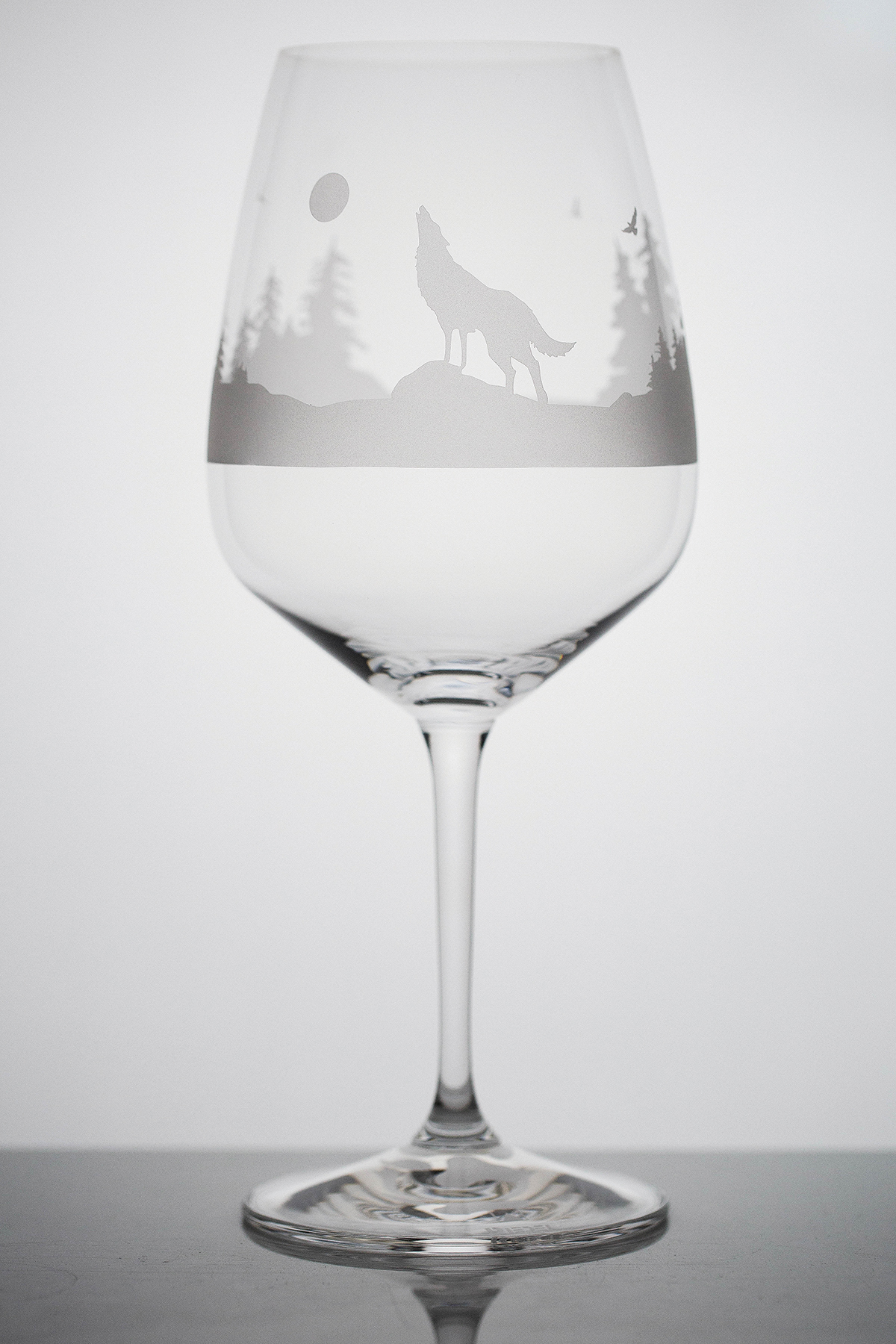
Jerry Spencer etches glasses with images of local flora and fauna.
Photo by Colby Rabon
After a long career as a project manager for GE, artist Jerry Spencer wanted to live closer to the natural world, so he moved to Weaverville from his native Charlotte. Soon he married his new next-door neighbor, who is a candlemaker. She’s the one who introduced him to etching glass, which she does with etching cream to decorate glass candle holders. Spencer tried his hand at it, using designs he created. Making the designs awakened his artistic side, which had essentially been dormant since childhood, when he used to love to draw.
“In elementary school my art projects ended up displayed in the hallways, which seems like a big deal when you’re that age, and I remember feeling proud of that. I also won a kite-design contest in school, and when I was at GE, my coworkers always thought my presentations were creative.”

Soon Spencer upped his game by experimenting with sandblasting images by hand onto non-leaded, food-safe crystal glass — a delicate and painstaking craft he taught himself by watching tutorials on YouTube during the pandemic lockdown. Crystal is distinguished from ordinary glass because it is made from additional minerals that give it increased strength and durability. The enhanced mineral content of crystal also allows for thinner, lighter-weight drinking glasses that are super clear and sparkly, beautifully refract light like a prism, and chime like a bell when tapped.

Spencer uses a stenciling process to achieve his designs.
“My designs are based on geometric shapes or whatever inspires me, like trees and bears,” adds Spencer, who also does custom work based on his clients’ ideas. He has a talent for utilizing negative space to accentuate his designs; the images are applied with stencils, a process that requires excruciating attention to detail and a very steady hand.

“I also have to study the curvature of the glass,” he says. “Some glasses have what’s called a compound curve, which means it curves in more than one direction at the same time.” A compound curve presents complex challenges when etching, because the physics of the curvature make glass more susceptible to breakage or distortion of the image. Spencer sources all of his crystal from the Austrian company Riedel, an 11th-generation family-owned enterprise founded in the 1700s. Influential wine critic Robert Parker stated that the effect of Riedel glass makes a profound difference in taste and enjoyment that cannot be overestimated. They also make varietal-specific glasses scientifically shaped and designed to improve the tasting experience depending on the type of wine, such as cabernet versus riesling versus chardonnay.

Spencer offers etched crystal, varietal-specific wine glasses as well as other types of stemmed and stemless glasses, Champagne flutes, tumblers, and gracefully shaped decanters. He almost always completes his pieces by etching an artistic signature of sorts — a unique design placed discreetly on the bottom of the glass.

To point it out in retail settings he uses cheeky signage that reads: “Notice My Bottom.”
Jerry Spencer, Blue Ridge 360, Weaverville, blueridge360.blue and on Instagram @blueridge360. The artist’s work is carried by New Morning Gallery (7 Boston Way, Biltmore Village, newmorninggallerync.com); Artisans on Main (14 North Main St., downtown Weaverville, see IG); Marquee (36 Foundy St. in Asheville’s River Arts District, marqueeasheville.com); and Silver Fox Gallery (508 North Main St., Hendersonville, silverfoxgallery.net).